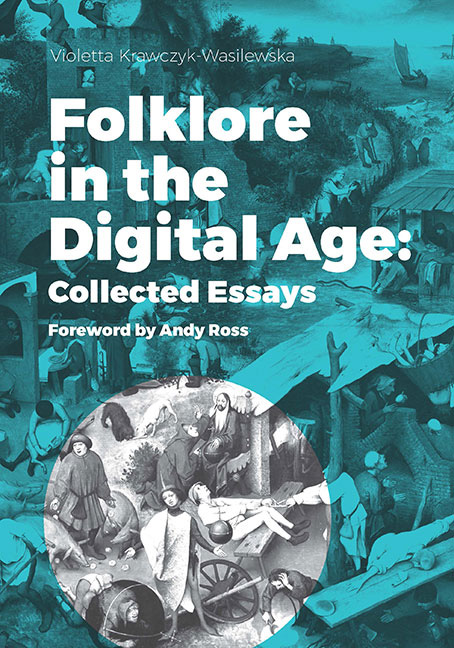Book contents
- Frontmatter
- Contents
- Acknowledgements
- Foreword
- I The Art of Bruegel and the Folklorist
- II e-Folklore as a Part of Digital Culture
- III Towards a Digital Folklore Heritage
- IV Post September 11: Global Fear vs Digital Humour
- V The Haiti Legends Revisited and the Power of e-Rumour
- VI The Global Dating Phenomenon
- VII Matchmaking through Avatars: Social Aspects of Online Dating
- VIII The Global Food Story and the Internet
- Bibliography
- Miscellaneous Endmatter
II - e-Folklore as a Part of Digital Culture
Published online by Cambridge University Press: 22 December 2017
- Frontmatter
- Contents
- Acknowledgements
- Foreword
- I The Art of Bruegel and the Folklorist
- II e-Folklore as a Part of Digital Culture
- III Towards a Digital Folklore Heritage
- IV Post September 11: Global Fear vs Digital Humour
- V The Haiti Legends Revisited and the Power of e-Rumour
- VI The Global Dating Phenomenon
- VII Matchmaking through Avatars: Social Aspects of Online Dating
- VIII The Global Food Story and the Internet
- Bibliography
- Miscellaneous Endmatter
Summary
The origins of interpersonal communication can be traced back more than 35,000 years to the Paleolithic age. Since that time forms of oral, aural and visual communication have developed in many ways; landmarks being the emergence of chirographic forms of language (invented 5,000 years ago) and, of course, the epochal Johann Gutenberg's invention of printing processes in the 15th century Europe. But even until the middle of the 19th century communication amongst populations generally was primarily based upon face-to-face oral practices – the use of printed media being largely the preserve of educated and literate social minorities.
The second half of the 19th century, however, saw the rapid development of European democratisation, education, literacy and technological inventions. In the sphere of communication telegraphic, telephonic, gramophonic and photographic technologies were developed. These were revolutionary milestones in two ways. The first two, telegraphic and telephonic communication, enabled synchronous exchanges between parties who were distanced from one another (using, in the case of telephones, purely oral practices, with no requirement for literacy). The second two, gramophonic and photographic technologies opened the door to mass consumption of a single phonic or visual message by much larger populations – again with no requirement for literacy. These were the beginnings of a shift in human communication from small scale local practice to an age of mass media communication.
In the 20th century the arrival of radio and film media built further on these changes and by the middle of the last century developments in cybernetics and electronics, and the invention of computers, satellite technology and mobile phones added further to the explosion of a global information society. This revolution reached its apogee in the 1990s with the emergence of the Internet idea initiated by Tim Berners-Lee in 1989, and the World Wide Web (www), that in 1992 connected 1 million computers all over the world. By the end of 2015 there was the widespread availability of computers (3 billion users) and mobile phones (5 billion users) at high street prices in many parts of the world. It was further enhanced by the move towards integrated multi-media digital technologies (Integrated Services Digital Networks) and interactive electronic services (iPads, iPhones, tablets). Communication without wires via mobile phones soon was transformed into further phone functions: photo and video camera and mini-computers.
- Type
- Chapter
- Information
- Folklore in the Digital Age: Collected Essays , pp. 21 - 38Publisher: Jagiellonian University PressPrint publication year: 2016



